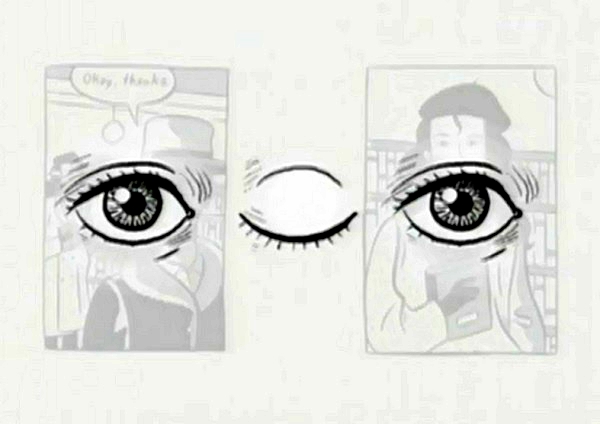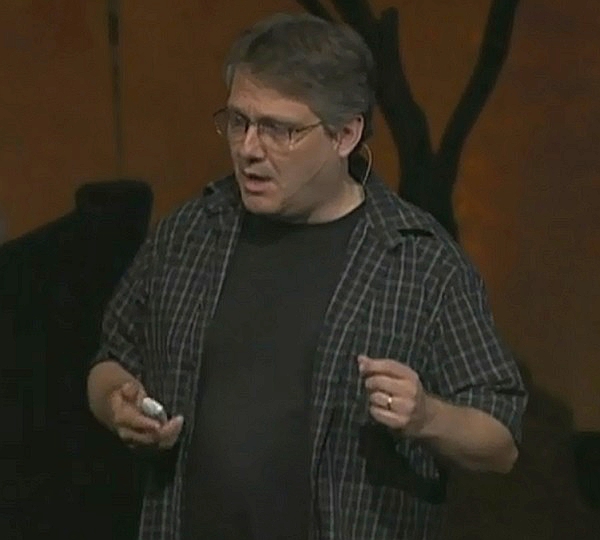Whether you are a fan of comic books or not, this is an entertaining TED talk and here is why: it expounds the process of thought and observational connectivity in science and in the arts. Uh- what does that mean? In simpler terms, this short TED lecture explains how a scientific mind operates in the arts.
Narrator Scott McCloud is the son of a blind genius.
His Father was a rocket scientist and inventor for the US defense industry and his siblings are all working in the Sciences. Scott on the other hand, is a comic book artist.
At the start of his TED talk, Scott refers to his Father and explains that the ‘apple’ really doesn’t fall that far from the ‘tree’- it’s tough to fight genetics. He came to realize that working in Comic Books is actually not that different from working in Science and that our contemporary understanding of how we define art and understand media is wrong. It is, he says, one of interrelated connectivity based on thought and observation. In other words- Variantology.
This is a short lecture weighing in at a little over 17 minutes. Scott does an artful job of breaking down the ‘modus operandi’ of curious minds. He summarizes insight using a K.I.S.S. quadrant grid that shows that our processes of thought are indeed interrelated. Using a four-sectioned pyramid, he helps rearrange and reuse a mathematical formula- illustrating how the Classicist, the Formalist, the Animist and the Iconoclast are all just parts of the same formula of human experience and thought. As in scientific investigation and theorizing, creativity in the arts is powered by human experience and thought.
Things worth remembering.
Scott offers a “quick bake” recipe for meaningful results: Learn from everyone. Follow no one. Watch for patterns. Work like Hell. For the Silo, Jarrod Barker


Via Twitter** from @Sioflynn
@thesiloteam very interesting question [Is transmedia another name for variantology?] McCloud’s ‘blood in the gutter’ is key to my thoughts on transmedia – mulling on variantology… Dr. Siobhan O’Flynn
I like the way he has crafted his presentation to include an historical context. It works well with the human desire to see into the deep past and into the deep future i.e. seeing “time”.
His example adds to that capacity, another, i.e. to see into deep “space”.
Chris Hadfield expanded this ‘seeing’/sensing somewhat, including his own version of creating ‘interactants’ on a scale that hardly raised anyone’s eyebrows. WOW has changed to SO?
We have come to expect that anything is possible.
From a psychological point of view, there is something between these lines that speaks of a longing to be more than human. Wanting the capacities of a god is a theme beautifully expressed in the oldest poem in history coming out of Iraq.
I grew up memorizing the Baltimore catechism, reciting God’s capacities. Is it unreasonable for me to want them ALL, given I am made in his image and likeness?
I agree with you, it’s worth watching….. again. Marguerite Larmand